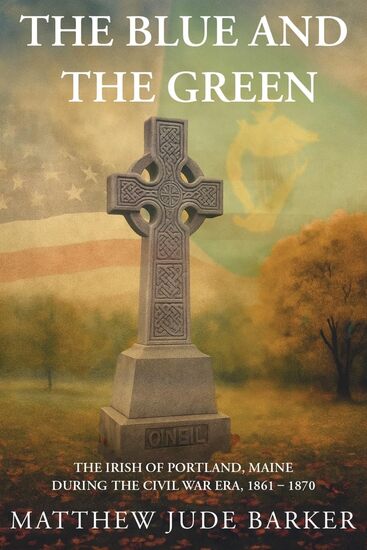Dr. Martin Luther King Jr. in the crowd during the March on Washington for Jobs and Freedom, on Aug. 28, 1963. U.S. NATIONAL ARCHIVES AND RECORDS ADMINISTRATION
By Peter McDermott
Tom Garvin’s “1922: The Birth of Irish Democracy” is one of those books that should be near the top of your reading list if you’re interested in the history of 20th Century Ireland.
In that 1996 work Garvin used the comparative methods popular at University College Dublin, where he is Emeritus Professor of Politics.
He argued that the Irish democratic political system founded in 1922 “was part of a general wave of democratization [in Europe] that followed the First World War.”
Garvin says that the “Irish people had a century of experience not with democratic government but with democratic elections. They also had in front of their eyes the spectacle of a working democracy in the United States and a near-democracy in the United Kingdom.”
And, of course, Ireland was one of the few places where democracy was to continue without interruptions.
Garvin, who spent time studying and working in the U.S. in the late 1960s and 1970s, was very positive in his assessment of the American system in each mention of its politics and constitution in “1922.”
At one point, he even called the U.S. the “first liberal democracy.”
There is no mention anywhere of slavery, the Civil War, Jim Crow, segregation or racism generally.
By way of contrast, a prominent Nordic sociologist of Garvin’s generation – one on the reading lists at UCD – compiled a table that listed when certain key nations became full democracies with universal suffrage. The year given for the United States was 1970.
Garvin didn’t mention race, because first of all he likely didn’t think of it – it was not in the forefront of his consciousness (maybe it had been a while since he’d seen “Mississippi Burning”). We might reasonably surmise his position: the basic structures of American democracy were always sound whatever its moral shortcomings. The opposite view was to see racial discrimination as its defining flaw, one that undermined it entirely.
Enter Dr. Martin Luther King Jr. and the other leaders of the Civil Rights Movement, who in a way combined elements of both positions.
King became a public figure overnight when he was thrust into a leadership role during the early days of the Montgomery Bus Boycott begun in December 1955, the month before his 27th birthday. He was seen as someone who could express both the moderate and militant strands of opinion in his community.
Moral force
Press people from the beginning compared the young pastor from Atlanta, Ga., with Mahatma Gandhi, the Indian leader assassinated on Jan. 30, 1948; but there was very little direct influence from that quarter, at least early on. Rather, King’s intellectual world was dominated by the great Protestant theologians of the day — most notably Reinhold Niebuhr and German émigré Paul Tillich, some of whose ideas he critiqued in his doctoral dissertation at Boston University. Niebuhr, for his part, was to become a vocal supporter of the Civil Rights Movement and a defender of its most public face. He said: “King’s doctrine of non-violent resistance is not pacifism. Pacifism of the really classical kind is where you are concerned about your own purity and not responsibility. And the great ethical divide is between people who want to be pure and those who want to be responsible. And I think King has shown this difference.”
The Civil Rights Movement believed the power of moral force could be brought to bear on a Western constitutional government based on respect for the rule of law, on the idea of government for and by the people, as well as notions of consent of the governed. It was asking a society to act according to its own long-stated principles.
All of which, of course, was rather more easily said than done.
It wasn’t easy because in 1955 they chose to strike – it was a black citizens’ strike – and local white people’s ideas for a settlement tended to ignore entirely the principle at stake.
It wasn’t easy because exerting pressure on the bus authority involved everyday hardship and sacrifice on the part of ordinary African Americans.
It wasn’t easy because everyone involved was well aware that a similar effort to break segregation on the buses had failed in Baton Rouge, La., in June 1953 after a couple of weeks, though that campaign did provide the model and the inspiration.
It wasn’t easy, most of all, because they were appealing to people’s better nature when the system had been built upon ideologies of racial inferiority, and an unknown percentage of Americans, north, south, east and west still clung to those ideologies to varying degrees. It’s worth noting in this regard that anti-miscegenation laws remained in place in several states when Barack Obama was born in Hawaii in 1961 to a mixed-race couple.
It wasn’t easy, but it was the only way – even if the pace of change seemed glacial, and all the while was stirring up reaction and rage from those who were most opposed to it. It was, to put it in perspective, almost a full 15 years from that earlier bus boycott in Louisiana to King’s assassination. But by then, the idea of Jim Crow was just about broken. The ideas, though, of civil rights, of inclusion and of democracy were still very much on the agenda. King, who took his campaign north to Chicago in 1966, was increasingly raising the issues of poverty, nationwide racism and the pointlessness of the war in Southeast Asia.
Exclusion
Today, Garvin’s Syndrome is still with us. People still contrive ways to ignore or simply not think about race, which doesn’t help at all. President Obama’s election was a nice media moment – Kenyan father and Kansan mother, and their mix-raced child who becomes the first non-white president. But the non-whites were thinking just as much, if not more so, about the First Lady, her children and their black American family’s path to the White House.
Later, when some liberals were unhappy with the pace of change during Obama’s first term, they invoked as a sort of golden era the presidency of FDR – a time when most African Americans didn’t even get to vote. While blacks may have been favorably disposed towards President Roosevelt and had a great friend in his wife Eleanor, they were not a constituent part of the New Deal coalition, which would in time build the great American middle class. They lacked the clout at that time, but were also excluded on racial grounds.
One spinoff were black ghettos, created by whites — via insurance companies, and local, state and federal housing policies, which became a huge driver of economic and racial equality in America. And the last 40 years or so haven’t provided people the opportunities to catch up in any meaningful way.
Some who identify strongly with their own ethnic group suffer badly from Garvin’s Syndrome. They’d rather just not think about these things. But some do. Let’s look at a few Irish-American examples. Eileen Markey, author of the critically acclaimed “A Radical Faith: The Assassination of Sister Maura,” just last month referenced the topic of racial exclusion from the New Deal coalition in a New Republic essay. CNN political contributor Joan Walsh, who was emcee at the March 16 Irish Stand event at the Riverside Church, has grappled honestly with some of these issues in her work. Harvard’s Professor Mary C. Waters, who wrote the groundbreaking study “Ethnic Options,” is another.
And also Fordham’s Professor James T. Fisher, the author of “On the Irish Waterfront.” In his next book, he will explore the Irish-American Catholic experience by looking at his own family’s journey from grinding working-class poverty in Brooklyn to suburban comfort in New Jersey.
He was quoted this past weekend in “Why Catholic Colleges Excel at Basketball,” a New York Times story by Marc Tracy.
“As more and more ethnic Catholics moved out of cities but parishes and schools stayed put, black kids were admitted regardless of religious affiliation beginning in the ’60s,” Fisher told Tracy. “Then the church turned demographic fact into theological virtue by embracing urban advocacy and racial justice.”
Thinking about racial justice, thinking about freedom, thinking about jobs, thinking about racial equality, 50 years after the assassination of Dr. King, are still necessary when thinking about American democracy.








